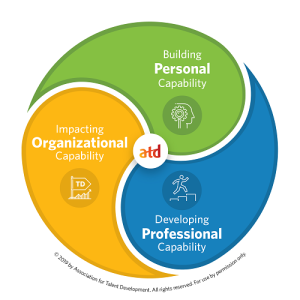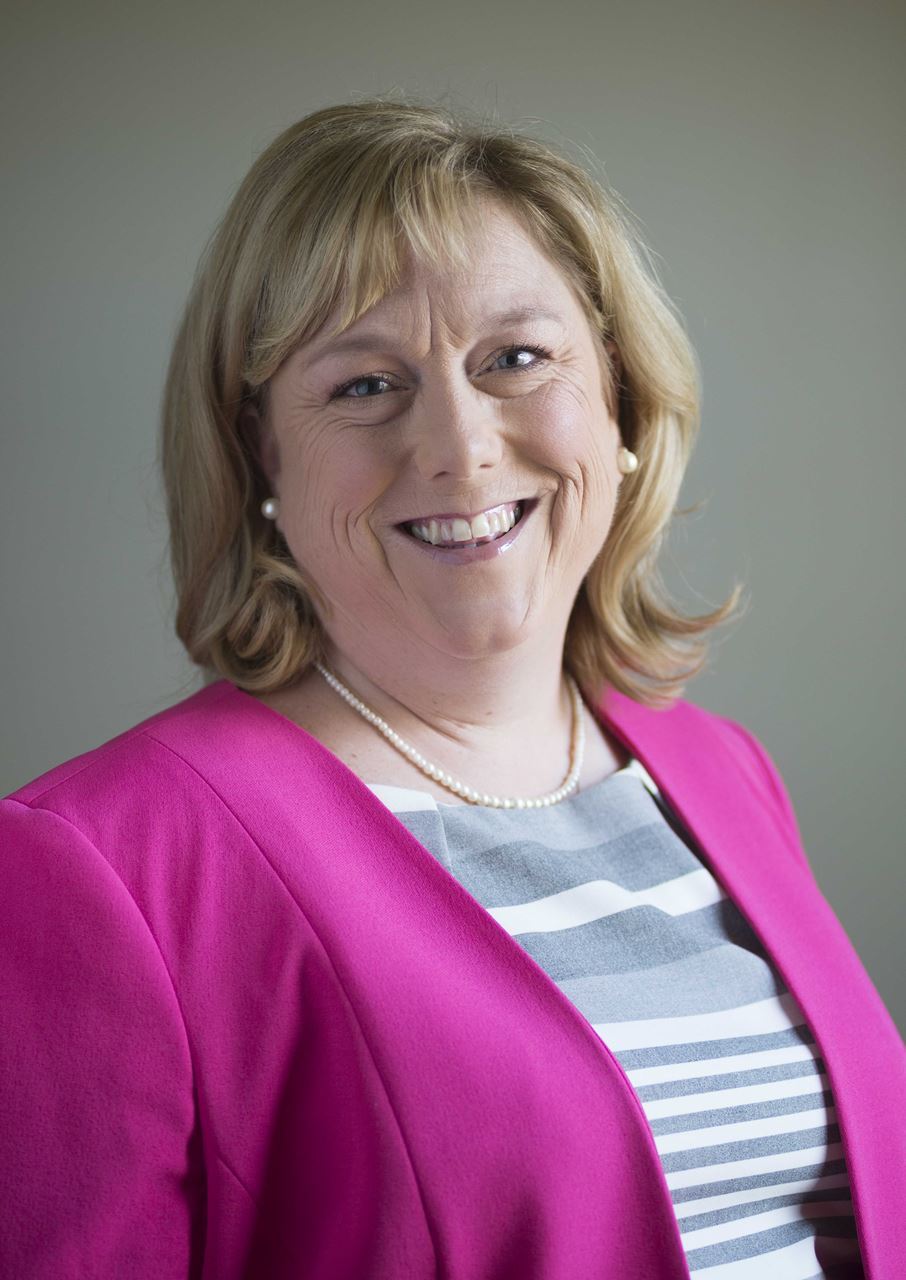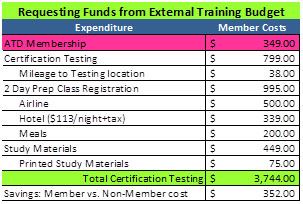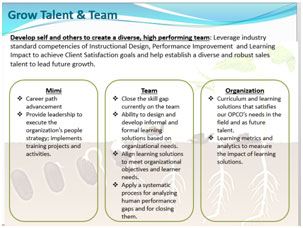Sign in |

 ATD offers two certifications to advance your knowledge and show your expertise in the field of Talent Development.
ATD offers two certifications to advance your knowledge and show your expertise in the field of Talent Development.
- The Certified Professional in Talent Development (CPTD formerly known as CPLP) for professionals with at least 5 years of related work experience. The exam covers the 22 capabilities in the Talent Development Capability Model.
- The Associate Professional in Talent Development (APTD) is a certification for professionals with 3-5 years of related work experience.
GCATD Member Mimi Ruttle shares her experience of researching, preparing for, and completing the CPLP (now known as CPTD) certification. When considering any certification, be sure to go through a similar process to consider cost, commitment, and return.

 As a Training Manager, for nearly six years, I had years of professional sales experience, but I had little formal education in teaching adults and designing learning programs. I relied on reading books and my gut instincts. This was working for me. I had success. However, I wanted better results and to make a greater impact on the organization that I serve. Within my role, I provide training, education and performance coaching to more than 500 people. The people I train, typically move into other roles within other operating companies within 18 to 24 months of being hired. I value being a recruiting center for these operating companies. By improving our classes, coaching and performance recommendations, our results will provide a greater financial impact to the organization and set the foundation for our new hires to continue their professional development. My development, career and reputation would also grow as an outcome. In my research to determine the best program to acquire certification, I looked at three categories: content, financial costs and time commitment. In the end, it was a clear choice. I chose to become an ATD Certified Professional in Learning and Performance.
As a Training Manager, for nearly six years, I had years of professional sales experience, but I had little formal education in teaching adults and designing learning programs. I relied on reading books and my gut instincts. This was working for me. I had success. However, I wanted better results and to make a greater impact on the organization that I serve. Within my role, I provide training, education and performance coaching to more than 500 people. The people I train, typically move into other roles within other operating companies within 18 to 24 months of being hired. I value being a recruiting center for these operating companies. By improving our classes, coaching and performance recommendations, our results will provide a greater financial impact to the organization and set the foundation for our new hires to continue their professional development. My development, career and reputation would also grow as an outcome. In my research to determine the best program to acquire certification, I looked at three categories: content, financial costs and time commitment. In the end, it was a clear choice. I chose to become an ATD Certified Professional in Learning and Performance.
Content
After reviewing multiple programs, I determined the largest benefit to me are the ten foundational competencies of the ATD’s CPLP® certification. With other certifications, you need to progress in levels to acquire the same knowledge or the programs are not as robust and miss important competencies I felt I needed. These competencies helped to fill my knowledge gaps. In the learning materials for the CPLP®, each competency is described with the educational theories, processes and practical application exercises. I found myself building a bridge connecting my experience to the educational knowledge I was learning. Even after my certification, I still leverage these materials when writing proposals or explaining the “Why” behind my recommendation. This practice has definitely enhanced my credibility as a Learning Leader.
 Financial Cost
Financial Cost
There was not a huge difference in the programs that I researched. When I developed my proposal to review with my Director requesting professional and financial support, I went beyond asking for the testing cost. I’m a salesperson at heart, so I asked for everything from the testing fees to the round-trip mileage reimbursement to the testing facility.
My request outlined the return on investment benefits on three levels, Personal, Team and Organizational. The return on investment was not necessarily, based on financial impact, but on how the skills, knowledge and experience will benefit each level.
 Time Commitment
Time Commitment
The CPLP® program was flexible with its testing windows and project submission due dates. When I discussed the goal with my Director, I was able to incorporate my workload into time commitment by sharing the testing windows, my CPLP® Study Plan, Project Due date and important work deadlines. I also demonstrated that there would be no business disruptions. As a result, I was able to secure both the professional and financial support.
If you are a similar manager like me and trying to search for how to deliver stronger results, I highly encourage you to look at the ATD's CPLP® Get Started Page to decide if the CPLP® program will benefit you too!
Mimi Ruttle, CPLP®
Training Manager
Nestlé Retail Operations Center



